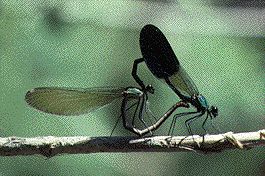Sexual selection

Sexual selection is the process by which a character increases in frequency in a population because it enables the organism to acquire more mates. It was first described by Darwin, who discussed two kinds of sexual selection.
Two kinds of sexual selection:
• Male competition Males compete among each other for access to females. This can take the form of direct fighting, or it can be more subtle. Male insects, for instance, while copulating with a female have various means of removing any sperm she possesses from matings with previous males; one example is the damselfly Calopteryx maculata in which the male uses brushes and hooks on the penis to scrape out the sperm. There are many other delightful examples, but we shall not discuss them here.
• Female choice A structure like the peacock's tail cannot plausibly be explained by male competition. It would be no use in fighting - indeed it would reduce the male's fighting power - and no one has ever thought up a more subtle competitive function for the tail. Darwin suggested that the tail exists instead because females preferentially mate with males that have longer, brighter, or more beautiful tails. If they do, the mating advantage of males with longer tails will compensate a corresponding amount of reduced male survival.
Thus sexual selection leads to the evolution of offensive weapons or ornamental characters in males - traits known as secondary sexual characters. Sexual selection is recognized as the cause of sexual dimorphism - the existence of physical differences between the sexes.
Why do females prefer males with long tails?
| Next |



